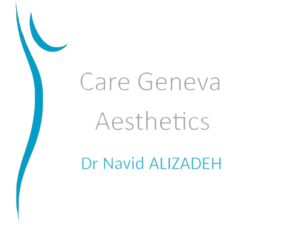Botulinium toxin injection
Botulinum toxin (with the trade names of Botox, Vistabel, Dysport and Xeomin) is the most common treatment in cosmetic medicine. It is a drug that decreases muscle contraction by acting at the junction of the nerve with the muscle. Since 1975, doctors have used botulinum toxin to correct childhood strabismus, tics of the face, and uncontrollable blinking of the eye. Some facial wrinkles are expression lines caused by the action of the underlying muscles.
The main objective of using Botox is to reduce fine lines and wrinkles, while maintaining sufficient mobility so as not to alter facial expression. In practice, the most classic indications for botulinum toxin relate to glabellar wrinkles, forehead wrinkles and crow’s feet. Other areas of the face can also be improved with this treatment, such as neck lines, fine lines on the face. You can also correct a drooping mouth, and in some cases a drooping nose. It is also a treatment for dyshidrosis (excessive sweating) typically of the armpits, palm of the hand, feet or scalp.
Another very useful indication is in the case of bruxism, we manage to decrease the force of contraction of the masseter muscle which improves the symptomatology, but also the hyperprojection of the muscle which can be aesthetically unpleasing in women. Finally another very useful indication is the treatment of headaches and migraines.
Botulinum toxin treatment consists of a series of usually painless injections, using a fine needle. The duration of treatment is a few minutes. Patients can resume normal activities after injections. Thirty minutes before the injection, we apply an anesthetic cream to improve patient comfort. We also mix the botulinum toxin with a local anesthetic which further improves comfort during the injection.
The results are visible between the third and the seventh day. You are seen again in consultation after two weeks. A “touch-up” can be proposed at this time to perfect the result. After four to six months, the effect fades and the session must be repeated. From the second injection, the results can be more lasting (8 months or more).
Side effects are rare: Headaches can last 24 hours after the injection of Botox and are treated with paracetamol. Nausea, flu syndrome may appear. Pain, redness or bruising may occur in the injected area. Our physicians with his experience will make sure to avoid these last complications as much as possible. Paresthesia and muscle weakness may also appear and usually can last few weeks. Allergies are very seldom.
FAQ
Am I going to look completely frozen? We decrease the activity of the muscles in a very personalized way and we keep the mobility of certain muscles. For example, we typically keep the upward movement of the eyebrows, which expresses astonishment. The other movement that can be modulated is in the glabellar region and that expresses anger. In this area, we can, depending on the request of our patients, completely or partially block the movement. Indeed, for an actress, for example, a total blocking can be prblematic because, as the expressions are less intense.
Why does the effect of the toxin last longer in some people compared to others? The effect lasts for 4 – 6 months. The duration depends on several factors. The dose of botulinum toxin and the patient’s “expressiveness” are among the most important factors. Regarding the dose, there is an optimal dose. If you inject more than this dose, the effect will not be stronger and will not last longer. This dose varies from patient to patient. It is the experience of the our physicians that will determine this optimal dose. Furthermore, the more expressive a patient, the less the effect of the botulinum toxin will last over time. Finally, the tolerance to the appearance of the first signs of a decrease in the effect of botulinum toxin varies from one individual to another. Some wait longer than others to consult.
What is the cause of a “sad eyes sign” that we sometimes see after treatment? Sad eyes are a classic problem often due to the some physician’s inexperience. To simplify, there are two muscle groups around the eye. Those that raise the eyebrow and those that lower the eyebrow. It is an excessive injection of the frontal muscle, the muscle that allows the eyebrow to rise. A careful examination of the face, especially the muscles around the eye, the eyebrow, the eyelid, helps determine the therapeutic strategy to avoid this problem. When in doubt, the forehead injection is carried out at the two-week control session.
What is the Mephsito sign? It’s the opposite problem of looking sad after injecting Botox. This is also an imbalance during the injection, but which favors an unnatural rise of the eyebros that is corected during the “retouch” session. This problem is usually easier to correct that the “sad eyes sign”.
My eyebrows are not at the same level, does botulinum toxin can improve this problem? Yes, in some cases, this problem can be improved by injecting the right and left side differently. If patients are not always aware of this phenomenon our physician will report it before treatment to avoid any misunderstandings about the expected result. Because sometimes, an asymmetry can only be partially improved.
I have arched eyebrows, can I be treated? Yes, treatment in this case must imperatively take into account your type a eyebrow in order to avoid flattening the eyebrow. The forehead injection points are thus adjusted by our physician.
What is the difference between the different toxins (Botox, Vistabel, Dysport and Xeomin) ? The differences are not significant for the patients. Indeed, our physicians can achieve an optimal effect with any of the products we have mentioned. Dysport tissue diffusion is greater. Some physicians prefer this effect and therefore use this product.
